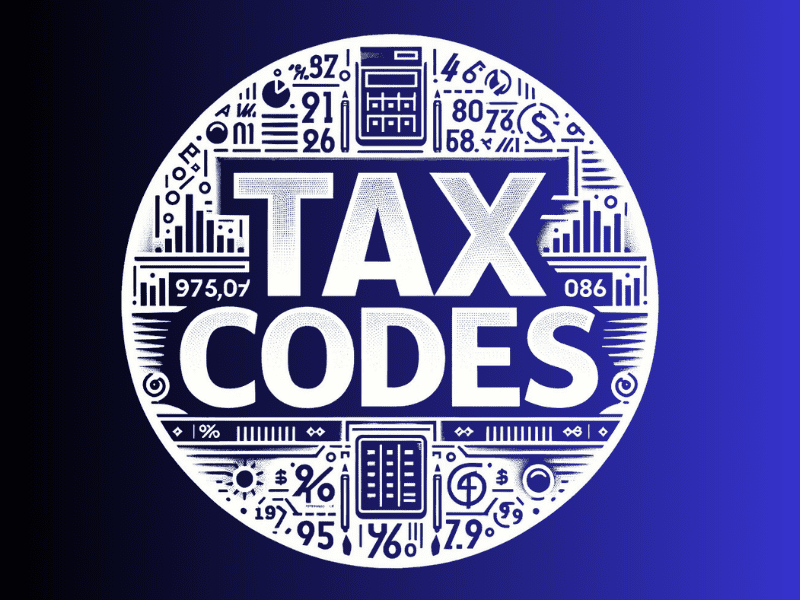
Receiving your monthly payslip is one of those moments that many people look forwards to. However, all too many of us simply glance at the take-home pay, and overlook tax sections and the like. In line with this, knowing about the different aspects of your payslip can actually be incredibly helpful.
Luckily, today’s guide has outlined some of the key things you should know about tax codes on your payslip. Hopefully, this will allow you to understand your payslip a little better.
What are Payslip Tax Codes, Anyway?
Before we begin looking at the different tax codes, we first need to mention what tax codes are. A tax code, at its simplest, is a code that indicates how much PAYE you’ll contribute from your payslip. These are displayed on every payslip, alongside other important information such as your personal national insurance number.
The tax code is implemented to allow your PAYE to be taken directly from your payslip. This makes paying taxes significantly easier for employed workers and reduces the risk of errors being made. However, since self-employed workers won’t receive payslip, this only applies to employed workers. Nevertheless, self-employed and employed individuals still fall within the same tax brackets.
How to Check My Tax Code
If you need to check what your tax code is, there are several places you can potentially find this. For one thing, if you’re employed and paid with a regular payslip, this should show your tax code. Alternatively, you can also find the tax code on your P45s, P60s (income statement), and P2s (PAYE coding notice).
Why Do I Have Two Tax Codes?
Most people only have a single tax code. However, if you have more than one job, you may also have a second tax code, which is important to keep in mind. Your personal allowance will then be determined based on your primary source of income; you can potentially ask the HMRC to change this to another income source if you wanted, though.
When Tax Codes are Incorrect
In a handful of cases, it is possible for an incorrect tax code to be given. This is usually because you have been allocated a temporary, emergency tax code. Usually, this happens when switching jobs and while your employer is awaiting details regarding the previous role. However, tax codes may also change if you have underpaid or overpaid on your taxes. As such, if this is the case, you should be notified of this by HMRC; they will usually also let you know whether you are due a tax refund or if you have underpaid.
The Different Tax Codes You Should Know
By now, we’ve outlined the main things you need to know about what tax codes are and how they work. Now, we can take a look at some of the different tax codes you may see on your payslip. These include the following:
- L: You are entitled to the standard personal allowance.
- N: You have transferred 10% of your personal allowance to a partner.
- M: Your partner has transferred 10% of their personal allowance to you.
- 0T: Your personal allowance has already been used.
- BR: Basic rate tax.
- D0: Higher rate tax.
- D1: Additional rate tax.
- NT: The income in question is not taxed.
- S: Your income is based on Scottish tax rates.
- S0T: Your personal allowance has already been used under Scottish tax laws.
- SBR: Basic rate tax under Scottish tax laws.
- SD0: Intermediate rate tax under Scottish tax laws.
- SD1: Higher rate tax under Scottish tax laws.
- SD2: Top rate tax under Scottish tax laws.
- C: Your income is based on Welsh tax rates.
- C0T: Your personal allowance has already been used under Welsh tax laws.
- CBR: Basic rate tax under Welsh tax laws.
- CD0: Higher rate tax under Welsh tax laws.
- CD1: Additional rate tax under Welsh tax laws.
- W1 / M1 / X: Emergency tax codes (these are temporary codes, often following a change of job. These last until you have caught up on tax payments).
In line with the above tax codes, you should be able to determine the tax group or category you fall into. Of course, if you also have an additional self-employed income, you may pay a different rate of tax on self-employed earnings. Keeping this in mind is important when submitting your tax returns; fortunately, an accountant should be able to help if this is something that applies to you.
Tax Codes on Your Payslip – Final Thoughts
Tax codes are a somewhat complex subject, but they shouldn’t have to leave you feeling lightheaded. After all, they simply relate to the band of tax you fall into; and, once you have found your code, all you need to do is check what this particular code means.
However, if you need any further support with your taxes, or if you’ve noticed you’re in a different tax bracket to what you’d expected (and need support to manage your tax payments), contacting your local “accountant near me” for support. Fortunately, our LiderTax experts can help! So, please reach out to our team today. We’ll do our best to help you find the most tax-efficient and appropriate strategies for your needs.
.



